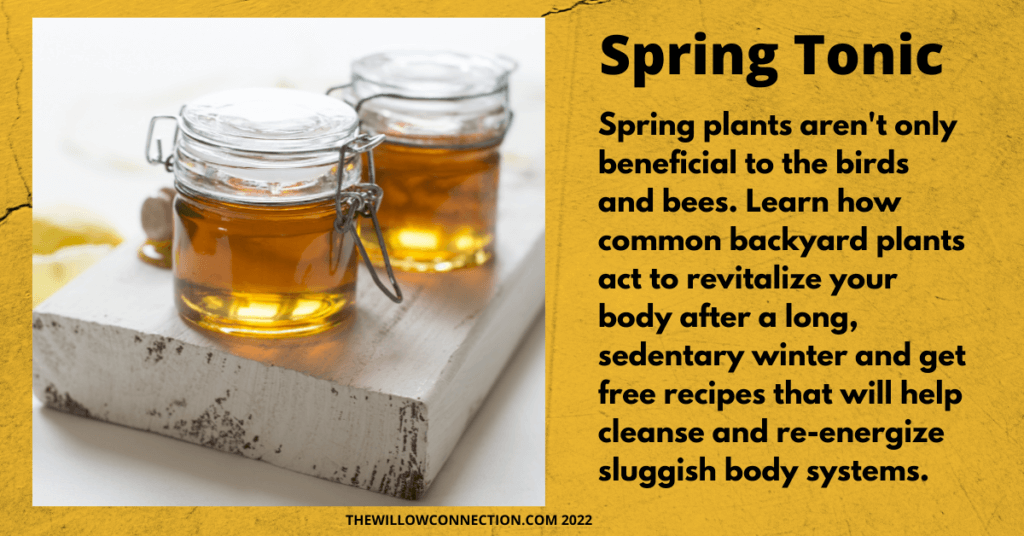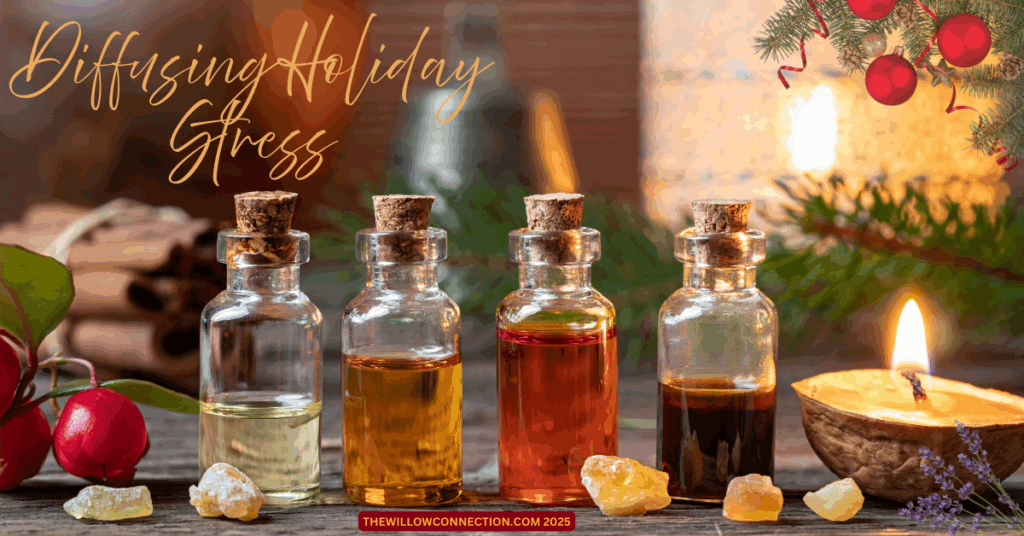Our Early Ancestors Knew a Thing or Two
In my quest to learn about herbs and natural medicine, I discovered information and recipes that our early ancestors probably used. Anyone who is in tune to Mother Nature knows that seasonal changes also mark changes in how our body responds to the environment. Whether you suffer from spring allergies or not, evidence of pollen is everywhere. Winter was a critical time of year for our early settlers and coming out of it meant they needed to reboot their systems with nourishing herbs to cleanse and stimulate bodily functions to ready themselves for the physical labor required in the months ahead.
Let’s face it, before we had the luxury of grocery stores and pharmacies, people lived off the land and they knew how to do it well. Their knowledge is still available to us if we are willing to learn. There is nothing trendy about how they used plants. Food also became their medicine and they worked very closely with Mother Nature to ensure their survival. These recipes and remedies still work, and we have the benefit of picking and choosing which ones we want to incorporate into our modern lives.
If you delve into herbal medicine, you will no doubt find recipes about tonics and fire ciders. However, once you read the ingredients your initial reaction may be one of disgust. But hold on, there are creative ways to reap the benefits of these recipes without necessarily needing a spoonful of sugar to make that medicine go down. I have acquired a taste for bitter herbs, tonics, and ciders. It certainly packs a punch when you take it straight, but you’ll learn to adjust and possibly like it if you give it half a chance.
Spring Plants That Will Do Your Body Good
Spring is a time of renewal and the plants that are abundant this time of year have considerable healing properties. Think of these plants as vital food sources just like the birds and bees do, and you will never look at these plants the same way again.
DANDELIONS – Those pesky weeds you keep trying to kill in your yard are edible and each part of the plant offers something beneficial to your body. Dandelions are good for your liver, kidneys, and digestive system. It’s a nourishing herb, which is high in vitamins, calcium, and potassium. You can sprinkle some of the greens on your salad just like you would spinach or lettuce. You can also make a tea by steeping the blossoms and leaves in hot water. Dandelion has diuretic properties so consult with your doctor if you are on medication.
CLEAVERS – This is that weird sticky plant with long stems. It serves as a tonic for the lymphatic system and supports a healthy immune system by transporting waste out of the body. It is high in Vitamin C and can be infused in apple cider vinegar for a dressing on salad.
VIOLETS – Both the flower and leaves can be used on this plant. It acts as a diuretic, which helps cleanse the body of stagnant waste. It is a calming plant that is high in Vitamin A and C. You can sprinkle violets on your salad, make a vinegar dressing, simple syrup, or even cookies. Check out my blog on how to make dandelion and violet cookies! I have added the link below to get the recipe.
NETTLES – This plant must be respected because it stings like a bee if you touch it. When harvesting this plant, it is best to do it early in the season when the plant is tender and small. I would recommend watching a video or doing some homework before tackling this plant, but it well worth it. It is a very nutritious plant, which acts as a tonic for the kidneys, blood, lungs, and digestive system. It may help with seasonal allergies and is beneficial for the body all year long. It makes a tasty tea, which is calming to the body.
These are a few plants that can be easily identified in your yard. Never use plants that have been sprayed with insecticides or that are growing near the road. I have only touched upon the many benefits and uses of these herbs. I could easily write an entire blog about each one, so if you want to learn more now, I recommend buying a book or doing some research online. There is plenty of information available to get your feet wet without costing a dime.
There are many versions of fire cider and tonics available to the public. I am going to share some of the recipes I have from classes I have taken. Let these recipes serve as a guide because you can alter or add ingredients once you have the basic recipe. I have chosen these because the ingredients are easy to acquire. You can always purchase herbs online or your local health food store if you don’t want to harvest them yourself.
Spring Tonic Recipes
Basic Spring Tonic
½ onion, chopped
2 cloves garlic, chopped
1/8 cup horseradish, chopped
¼ beet, chopped
Add to a large jar and top with apple cider vinegar. Cover and let sit for 4 weeks, shaking daily.
Strain, rebottle, and drink about a tablespoon daily. It does not need to be refrigerated.
You can turn this into a vinegar dressing and pour over salad if you prefer. Try throwing in some dandelion leaves and violets while you are at it!
Seasonal Allergy Tonic
½ onion, chopped
2 cloves garlic, chopped
1/8 cup horseradish, chopped
¼ beet, chopped
½ teaspoon nettles
½ teaspoon elderflower
¾ teaspoon golden rod (Yep, it’s typically ragweed that is the culprit, not golden rod)
¼ teaspoon turmeric
¼ teaspoon ginger
¼ teaspoon cinnamon
Add to large jar and top with apple cider vinegar. Cover and let sit for 4 weeks, shaking daily. Strain, rebottle, and drink about a tablespoon daily. It does not need to be refrigerated. Turn this into a dressing if you dislike the straight shot.
Optional Additions – local honey, pinch of cayenne pepper, dried orange and lemon peel or chopped whole if fresh.
Dress Up Your Salad
Basic Vinaigrette Dressing – 1:3 ratio
Small batch – 1 Tablespoon Spring Tonic and 3 Tablespoons olive oil
Large batch – ¼ cup Spring Tonic and ¾ cup of olive oil
Spices or herbs as desired
Whisk to incorporate
Store on the counter in a jar with a tight lid to remix as needed
If you added fresh ingredients, store in refrigerator.
After plating your salad, don’t forget to sprinkle some violets, dandelions, or pansy blossoms on top for a splash of edible color.
Off and Running
These are a few ideas to get you started. Once you get comfortable with the taste, you can start creating your own recipes. There are many recipes online that can serve as a guideline to help you or consider buying some herbal books to educate yourself about incorporating herbs into your diet.
Before taking any new herbs or tonics, it is recommended that you speak with your health care professional for any possible contraindications especially if you are already on medication. Respecting Mother Nature’s offerings requires a bit of education on our part. The more you know, the more you can enjoy what is growing in your own backyard.
A Little Extra: Dandelion and Violet Cookies
https://thewillowconnection.com/dandelion-and-violet-cookies/





